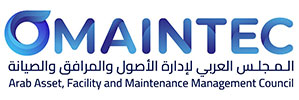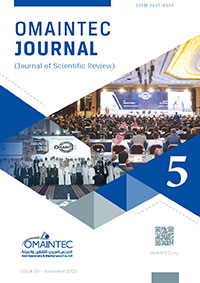Andreas Hadjioannou
Virtual IT Consultants, UAE andreash@virtual-it.ae November 2022
Abstract #
The Covid epidemic and the economic crisis around the world the last 2 years have shifted sustainability and workplace optimisation from long-term goals to urgent, short-term priorities. In relation to sustainability and according to the Global Alliance for Buildings & Construction, 2020 the building sector represents 35% Of the World Energy Consumption 38% Of the World CO2 emissions. In relation to workplace management organizations are now focusing on innovative and smart workplace strategies to improve the wellbeing and productivity of their employees while using space in a cost-effective and sustainable way.
The performance of our buildings and the productivity of the users depend on our ability to optimise the workspace and built environment based on real sustainability data. It is therefore important to understand that the way we manage and maintain our buildings plays an enormous part in achieving the wellbeing of our people and a net-zero future.
Until recently the available maintenance management system tools have not been available for us to collect, analyse, visualise and act on energy and workplace related data that truly allows facility and building managers to optimise sustainability, productivity, resilience and risk. This has now changed and in the last few years we have seen emerging, state of the art integrated facility and maintenance workplace software platforms which allow us to manage and transformation of our buildings into smart buildings.
This paper covers how traditional facility, asset and maintenance management systems have evolved into intelligent systems, transforming buildings and assets into smart and sustainable entities. These smart facility and maintenance management platforms are integrating and connecting buildings, people and processes, by eliminating data silos and aligning solutions into one shared information platform. They empower all building and asset stakeholders with actionable and meaningful insights towards a sustainable and clean future.
Such systems have initiated from Computerized Management Maintenance Systems (CMMS) and Computer Aided Facility Management (CAFM) systems evolving into Integrated Workplace Management Systems (IWMS) that incorporate multiple disciplines, technologies and data into a single universal platform. They combine property, space, asset, maintenance and energy management functionality under one platform, with data driven decision support system for making intelligence and energy conservation decisions.
Key Words
Sustainability, Facility Management (FM), Workplace, Asset Management, Smart Building, Space Management, Energy Management, Digital Transformation, Artificial intelligence, BI, IoT, BIM, CMMS, CAFM, iWMS, BMS, Digital Twins
Audience #
The paper will be useful to persons involved in managing facilities, buildings, space, assets, energy, people and ESG strategies from different departments within an organization. It provides facility and asset maintenance operations and their management teams with a clear understanding of what are the current workplace management systems and technologies in the market. It also explains on how these emerging technologies, related functionality and data can manage sustainability efforts and their workplace environment. The paper provides organizations stakeholders with the understanding on how these new tools will help them efficiently implement, monitor and meet their ESG strategy and objectives.
Executives from all departments of an organization will be able to understand how achieving sustainability goals and wellbeing of their people is tightly related on how we manage maintenance, facilities, buildings, assets, space and occupants. Professionals from all organization departments will benefit including, facility and maintenance management, engineering, construction, finance, HRM and IT.
Introduction #
The evolution of Technology is driven by business needs and the need to manage sustainability efforts and objectives and wellbeing of our people is no exception. So far the business driving for application software technology in relation to facility and assets maintenance were automation, productivity and cost effectiveness. Facility, maintenance and real estate management are now faced with new complexities. Situations like the Covid era has once more reminded us of the importance of managing space and hygiene. The business drivers are therefore shifting focus to providing a better place for people to work and leave and the need of energy management, CO2 reduction and general sustainability. Maintenance, workplace and data driven Management systems have emerged that allow organization to manage these objectives.
Many organisations lack good data to gain transparency and insights for optimisations and decision- making. Data is often spread across many sources like spreadsheets, documents, or isolated software products. So far different systems in the market covered the role of individual such needs, each with its own data silos. These separate systems have created incompatibilities, unreliable and uncertain results and heavy software maintenance costs.
Corporate FM and real estate managers are requiring an in-depth understanding of their company’s maintenance data and how these related to sustainable transformation. There is demand for reliable and integrated information systems for operational data about their buildings, spaces and usage in relation to maintenance and their environment. They would like to monitor how changes in occupancy in combination of asset performance effect the suitability of a building and how this information can be analysed and converted to knowledge and decision making.
This created the need towards tightly integrated and automated systems combining property, space, asset, maintenance and energy information management data under one platform. The result is what we call today Integrated Workplace Management Systems (IWMS). IWMS systems, apart from eliminating multiple data silos converging them into a single data platform, they provide technologies which allows the automation and performance monitoring of our buildings transforming them into smart buildings.
A smart building is one that uses technology to enable efficient and economical use of resources, while creating a safe and comfortable environment for occupants. Internet of Things (IoT) sensors, energy meters, Building Management Systems (BMS), decision support systems and artificial intelligence (AI) are amongst some of the technologies that are used to transform a building into a smart building to control and optimize its performance. IWMS systems provide the infrastructure and technology to integrate to all these sensors, energy meters and actuators, gathering activity data on various aspects within the building so it can be analysed and utilised to find out which operations can run more efficiently.
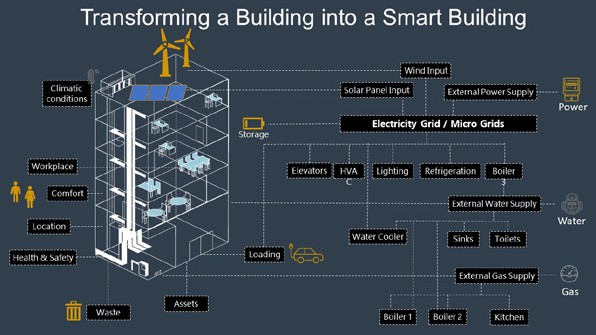
Diagram 1: Energy and Workplace data that can be collected from Smart Buildings using iWMS
An IWMS will provide a tight integration of data silos combining properties, space, asset, maintenance and energy related information. The information connectivity will be supported by various IoT sensors, energy meters and BMS systems connecting areas and assets to the IWMS platform converting your buildings into smart buildings. IoT sensors will be able in real time to measure occupancy, noise level, temperature, humidity, carbon dioxide, equipment data, energy data, meter readings and equipment status
IWMS using these data collected will be able to manage
- Setting your Environmental Social and Governance (ESG) objectives
- Collecting and measuring the information
- Analyze the information stored and produce insight information related to trends, progress and issues.
- Use the dashboards and reports to identify improvement, run audits and adjust the scope of the corrective actions and projects
- View and compare compliance against organization, international and national regulations
The performance of our buildings and the productivity of the users depend on our ability to optimise the workspace and built environment based on real sustainability data using IWMS. Combining the integrated property, space, asset, maintenance and energy data with ‘business processes’ in an integrated software (IWMS) solution is a key precondition to continuously identify and execute cost efficiency and quality improvement initiatives in any facility and real estate management organisation.
How are IWMS systems used to manage Sustainability #
Integrated Workplace Management systems (IWMS) allow you to create an eco structure where all data can provide a value into meeting your sustainability and general your ESG strategy objectives. IWMS systems combine all the possible property, space, maintenance and energy data under a big data integrated platform, with the ability to collect data using IoT sensors, meters and intelligence BMS systems. The way they work to accomplish this is by collecting huge data from all sources, cleansing the data so that it can focus on valuable information, grouping the results into specific data silos of information and converting them to knowledge.
O
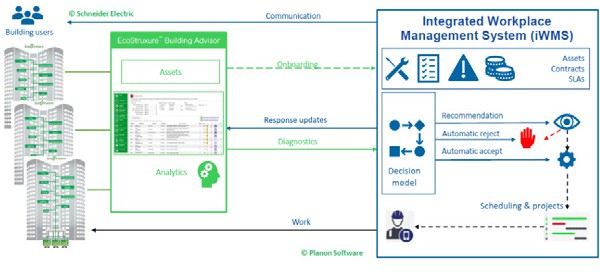
Diagram 2: IWMS Smart Buildings data flow diagram
As shown in the above diagram an IWMS solutions captures detailed diagnostic data from building equipment and indoor conditions, and converts this information into knowledge through data-enabled workflows. For example, real-time alerts on Chiller faults are automatically transferred into the IWMS platform. The IWMS solutions can automatically trigger workflows that direct interventions such as adjusting maintenance priorities. This knowledge related data is taken into the IWMS decision support system subsystem where Artificial Intelligence (AI) algorithms coupled with other best practices data are evaluated and suggestions are either provided and specific actions to rectify issues are taken. Exceptions (not known cases) are routed to Help Desk systems where maintenance tickets are created with specific instructions to technicians to carry out inspection and provide feedback.
This lifecycle of events continues until the best method is identified and applied. The system learns from these cases which helps it next time to make better decisions and the cycle continuous.
The information collected and the performance derived from this information from smart buildings are used for matching long-term sustainability goals with actions, monitoring progress, and providing data to prove compliance (and in many cases going above and beyond compliance) with regulations.
The diagram below outlines how the energy management functionality of an IWMS manages sustainability and monitors an organization’s ESG strategy. This allow users to obtain an insight into the performance of our assets and report on energy consumption and CO2 emissions, realizing your Environmental Social and Governance (ESG) ambitions in the built environment, and prove footprint reduction.
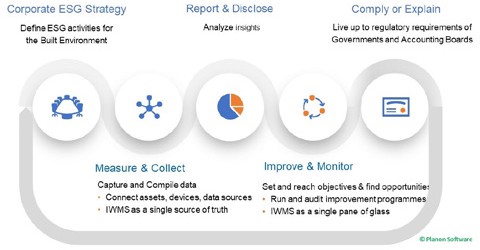
Diagram 3: IWMS Enterprise Sustainability Management workflow
The process starts from your ESG strategy specific objectives. The derived ESG objectives in relation to energy conservation and CO2 emissions reduction are entered into the IWMS system. The Energy Management Subsystem (ESM) of the IWMS collects information and transforms them into knowledge as shown in diagram 2. This information is monitored and compared to the set ESG objectives.
The overall IWMS enterprise sustainability management submodule provides detailed dashboards and reports to identify progress and compliance as shown in diagram 4 below.
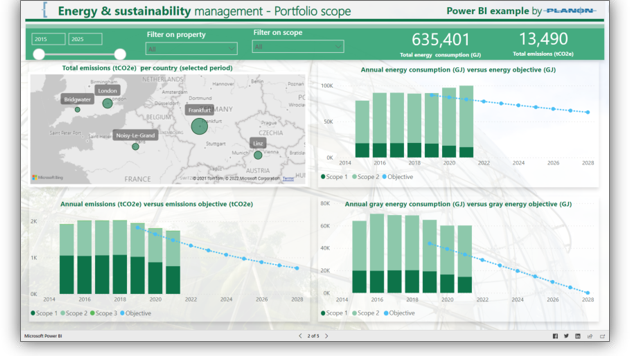
Diagram 4: IWMS Energy Management KPIs and Dashboards
A successful IWMS strategy connects workers and assets using the IoT and generates the data needed to optimise the workspace from a total life cycle perspective: energy efficiency, maintenance management, renewable energy integration and optimisation of other building technologies. Analytics tools and algorithms are used by the IWMS to further analyse results. From the derived results specific recommendations are provided to improve further the ESG objectives. Additional monitoring suggestions are also provided enhancing the data required to produced knowledge data.
Benefits of integrated Workplace Management Solutions #
IWMS provides real-time data reporting for individual buildings and for whole property portfolios. This can mean high-level insights and dashboards for accounting and reporting, and in-depth analysis at an asset level to support on-the-ground decisions and provide the tools to execute on them
There are a number of benefits that Integrated Workplace Management Systems provide to an organization. These include:
- Meeting your ESG Objectives. Being able to set, monitor and improve your Environmental, Social and Governance strategy and objective.
- Providing a better environment for your people. Ensure the wellbeing and productivity of an organization employees while using space in a cost-effective and sustainable way
- Improved data quality. An IWMS replaces standalone solutions with a single system, becoming ‘the single source of truth’. This improves data quality control and consistency. The IWMS can be integrated with other applications in your IT landscape to eliminate redundancy and differences.
- Lower IT support costs. An IWMS simplifies an organizations IT infrastructure because it eliminates standalone or legacy systems and makes sure the same version is used across the organisation. Therefore, application managers have fewer systems to maintain and can update and upgrade the software centrally. It makes their work easier, more effective and more productive.
- Process standardisation. With the use of pre-configured workflows based on best practices you can standardise processes, moving away from situations where multiple solutions and applications rule. It ensures continuous alignment and improved communication between business domains during the entire lifetime of the software.
- Better decision making. An IWMS offers you an integrated view and therefore a more complete understanding of your real estate and workplace portfolio. It combines information about the real estate portfolio, spaces, assets, maintenance and services activities, and so on. This not only helps you to react faster, but also to plan ahead.
All this adds up to mean that the financial benefits of IWMS include direct and indirect cost savings, capital cost avoidance, and opportunities to increase both revenues and returns on property investments. It also enhances the governance of the organisation by providing transparent data to investors, staff, customers, suppliers, regulators and any other stakeholders
Conclusion #
Digitation has become a necessity to manage everything and the wellbeing of our people and sustainability is no exception. Integrated Workplace Management Systems combine property, space, asset, maintenance and energy management functionality under one platform, with data driven decision support system for making intelligence and energy conservation decisions.
The performance of our buildings and the productivity of the users depend on our ability to optimise the workspace and built environment based on real sustainability data using IWMS. Combining the integrated property, space, asset, maintenance and energy data with ‘business processes’ under an integrated software (IWMS) solution is a key precondition to continuously identify and execute cost efficiency and quality improvement initiatives in any facility and real estate management organisation.
References #
- How the digitalisation of the built environment will increase sustainability impact – Planon Software
- Using Data to Drive Workplace Innovation and Sustainability – Frost & Sullivan
- Key challenges in reaching a net zero built environment – KPMG
- Green Quadrant: Integrated Workplace Management Systems 2022 – Verdantix

